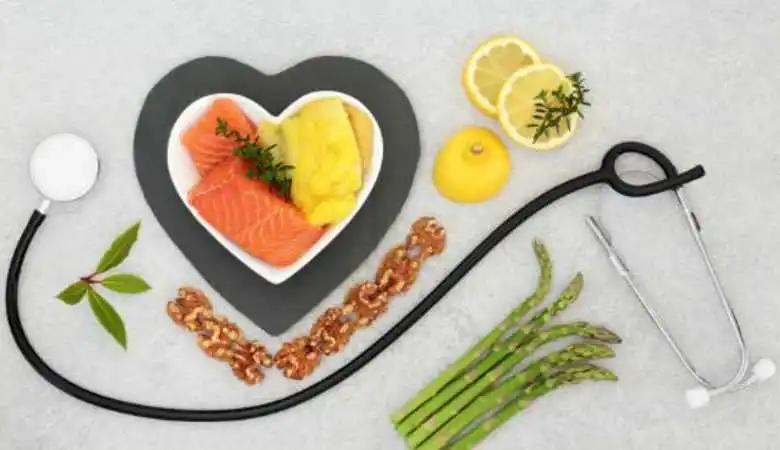High cholesterol is the cause of serious illnesses. It only sometimes depends on what we eat, but diet is also very important. Therefore, doctors recommend adhering to a diet that excludes harmful foods. But if cholesterol levels are already elevated, you can introduce foods into your diet that lower their levels.
Where is Cholesterol Found?
Cholesterol is a chemical compound from the group of lipoproteins that is produced in the liver and is involved in many metabolic processes, from the synthesis of vitamin D and various hormones to the formation of bile. It is important to distinguish between good and bad cholesterol. Scientists distinguish between high-density lipoprotein (HDL) and low-density lipoprotein (LDL). The latter is harmful to humans and, at high levels in the blood, can cause serious diseases. While high-density lipoprotein, on the contrary, is useful and helps to avoid problems with the heart and blood vessels.
Since cholesterol is found in cell membranes, it can be found not only in humans but also in animals. Cholesterol can be either produced by the body or ingested through food.
Normally, a person should consume less than 300 mg of cholesterol per day, provided that LDL levels in the blood are not elevated. There is a lot of bad cholesterol in animal products, especially fatty ones. It contains:
- Milk;
- Cheese;
- Cream;
- Eggs;
- Salo;
- Red meat – especially bacon, lamb;
- Semi-finished products – sausages and frankfurters;
- Baked goods and confectionery products with a lot of butter and eggs.
The champion in cholesterol content is the chicken egg, namely the yolk. One egg can provide up to 250 mg of cholesterol. But don’t rush to give up eggs: the advantage of this product is its low content of saturated fat. Studies show that it is he, being in food, that has a much stronger effect on increasing the level of bad cholesterol in humans than the cholesterol itself in the yolk itself.
“80% of cholesterol is produced by the liver, 20% enters the body with food. Cholesterol cannot move through the bloodstream on its own; for this, it needs special transporters, such as proteins. They are called lipoproteins. Two types of lipoproteins play an important role in the body: low-density lipoproteins (this type is called “bad” cholesterol) and high-density lipoproteins (called “good” cholesterol).
With the active consumption of fatty foods or with a violation of fat metabolism, the liver begins to produce huge amounts of “bad” cholesterol, that is, low-density lipoprotein. It begins to circulate through the bloodstream throughout the body. It can stick to the walls of blood vessels, thereby causing the appearance of atherosclerotic plaques. This leads to complications in the form of heart attacks, strokes, coronary artery disease and other cardiovascular diseases.
“Good” cholesterol, HDL, on the other hand, releases low-density lipoproteins stuck to the walls and delivers them to the liver, where they are either excreted from the body or converted into “bad” cholesterol.”
What Foods Have Lower Cholesterol?
Some foods help control cholesterol. It is believed that the best helper is fibre, which lowers LDL levels. Its fibres form a gel-like substance in the intestines, slowing down digestion, retaining cholesterol and preventing its absorption into the blood. As a result, cholesterol supplied with food is excreted from the body.
To lower cholesterol levels, or at least not increase them, a diet rich in omega-3 and omega-6 polyunsaturated fatty acids is also recommended.
The list of the most useful foods for lowering cholesterol looks like this.
- Cereals. The most convenient source of fibre: 100 g of oatmeal contains 1.7 g of fibre.
- Barley is a fibre champion. There are more than 17 g of fibre per 100 g of cereal.
- Beans are rich in soluble fibre. 100 g contains up to 10.5 g of fibre.
- Eggplants are also rich in dietary fibre: 100 g contains 3 g of fibre.
- Nuts. A study conducted on diabetics found that people who regularly consumed walnuts had increased levels of good cholesterol and decreased levels of bad cholesterol by 10%.
- Vegetable oils contain healthy fats and can fully replace animal oils. It is recommended that the diet be supplemented with olive, sunflower, and rapeseed oil.
- Fruits rich in pectin are a source of soluble fibre. Notice the apples and oranges.
- Soy. The benefits of soy products are less clear, but scientists agree that 25 grams of soy protein per day can help reduce bad cholesterol.
- Fatty fish. It is one of the main sources of omega-3 and omega-6 fatty acids.
Diet for high cholesterol
A diet for high cholesterol, first of all, excludes all foods that can increase the level of LDL cholesterol, which is harmful. You will have to remove from your diet foods rich in animal fats, fast food, and other ready-made and semi-finished products that are high in trans fats.
- Basic diet rules
- Eliminate animal fats: butter, lard, fatty meat.
- Remove trans fats: margarine, confectionery, and foods fried in large amounts of oil.
- Add fiber-rich foods.
- Replace animal fats with polyunsaturated fats: vegetable oils and fatty fish.
You can follow a Mediterranean diet, which is rich in omega-3 and omega-6 fatty acids and high in fibre.

